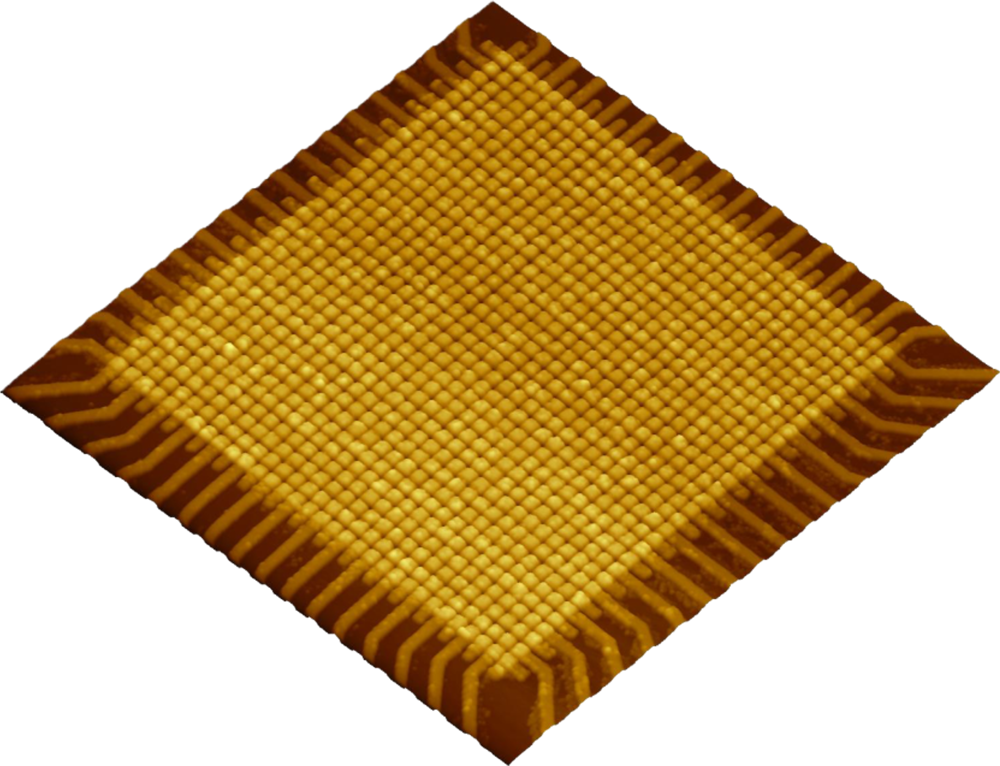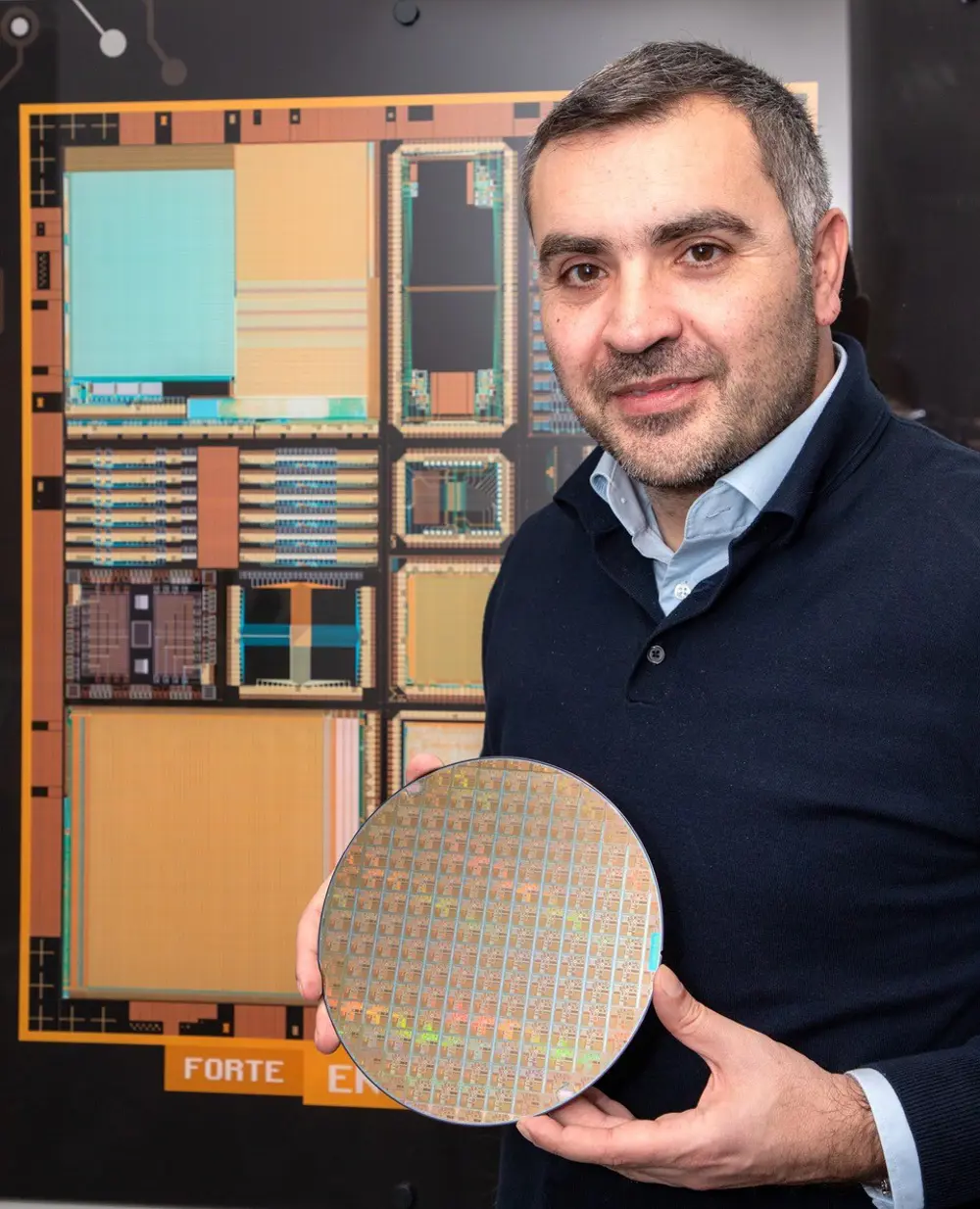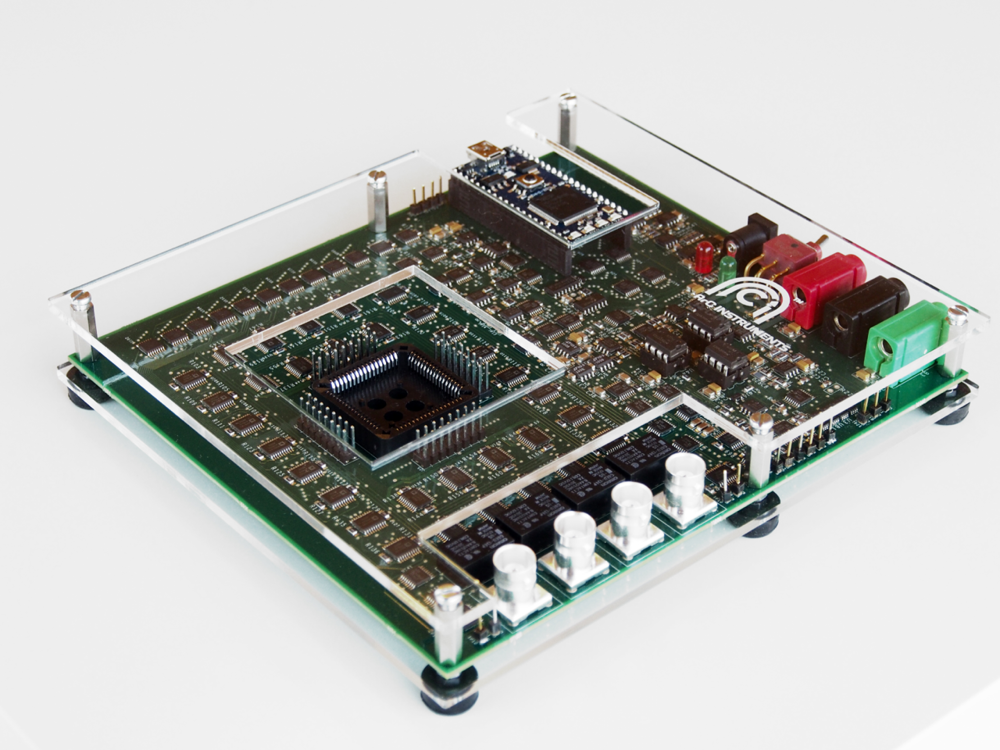
Memristors go mainstream: brain-inspired hardware could cut AI’s energy costs
AI’s energy costs are skyrocketing. In April 2025, the International Energy Agency (IEA), which monitors the world’s energy use, forecasted that electricity demand from datacentres will double to around 945 terawatt hours by 2030, exceeding that of Japan.
After 80 years spent making our computer chips in essentially the same way, a radical way to curtail AI’s energy use could be to redesign its hardware.
For inspiration, engineers often look to the most efficient computer we know of: the one inside our skulls. The brain is more powerful than most supercomputers yet consumes just 20 watts – about as much energy as an LED lightbulb.
Professor Themis Prodromakis, an electronics engineer at the University of Edinburgh, is helping bring such brain-inspired, or neuromorphic, computer hardware out of the lab and closer to adoption by the electronics industry. His work in emerging semiconductor technologies has earned him a 2025 Princess Royal Silver Medal from the Royal Academy of Engineering.

Professor Themis Prodromakis, one of this year’s winners of the Princess Royal Silver Medals. Prodromakis was awarded a Royal Academy of Engineering Chair in Emerging Technologies in 2020, which has enabled him to develop the fundamental electronics into AI hardware © Themis Prodromakis
This is your brain on silicon
One major bottleneck for conventional computer chips is that they process and store data in separate physical locations. “What they typically do is fetch the data from the memory, bring it into the processing unit, do some number crunching, and then take the outcome of that and go back and store it in memory,” explains Prodromakis. This back-and-forth both costs more energy and slows computation.
This approach is known as the Von Neumann architecture, after John Von Neumann, who is widely considered one of the fathers of computing. It’s done us well – most processors today still use it. But it’s not what the brain does.
The brain does not separate memory and processing. It has billions of neurons, with each interconnected with up to hundreds of thousands of synapses. These synaptic connections both store and process information locally, enabling the brain’s efficiency.
The neuromorphic semiconductor devices Prodromakis is developing that mimic this ability are called memristors, short for memory-resistors. Applying a high enough voltage changes a memristor’s resistance (the memory part), which in turn affects the amount of current flowing through these devices (the computing part). Contrary to other types of semiconductor memories, a memristor’s resistive state is retained even when you power off your electronics.
One major bottleneck for conventional computer chips is that they process and store data in separate physical locations. The back-and-forth between them both costs more energy and slows computation.

Every yellow node is a memristor, shown on a chip about 1 micrometre by 1 micrometre – which itself is about 100th of the width of a human hair. © Themis Prodromakis
This makes them fundamentally different to transistors – the effectively on/off switches that underlie digital computing with its ones and zeros. Memristors can store hundreds of different memory states, making them analogue.
“Up until now, when we were creating electronic systems, it’s like painting a picture, but just relying on black and white,” says Prodromakis. “All of a sudden, by introducing memristors, we introduce colour into the mix.”
The world we live in is also analogue – take a sound wave, for example. Conventional electronics must convert this continuous analogue sound signal to a quantized digital signal, and later often convert it back again into an analogue output. These transformations are hugely inefficient. Because of this, analogue computing has the potential to be much more efficient than digital, explains Prodromakis.
On top of this, memristors arranged in grid formation can store different numbers (instead of ones and zeroes), an architecture well-suited to the type of maths done by machine learning models, matrix multiplication. This too makes computation more efficient. By mapping AI models to such optimised hardware, says Prodromakis, memristors offer some unique ways for maximising data flows without costing us in energy.
Layer cake
Prodromakis has been working on memristors since meeting electronics legend, Leon Chua, on a visiting professorship at the University of California, Berkeley, in 2010.
Known as the ‘father of memristors’, Chua first hypothesised the devices’ existence in 1971. Back in London, Prodromakis began making and testing memristors in his lab, at the time at Imperial College London.

High-resolution transverse electron microscope image showing the two terminals (blue, labelled as the top and bottom electrodes) and the active metal oxide (green) where the switching takes place. © Themis Prodromakis
To make memristors is like making a layered cake, explains Prodromakis. (His preferred example: the pantespáni cake.) First, you add a layer of pantespáni, then cream, and then another layer of pantespáni.
“We do that in an extremely controlled environment, in clean rooms and with very expensive equipment that allow us to control the thickness of the cream and the pantespáni with excellent precision.” The middle ‘cream’ layer is a metal-oxide, whose chemistry, and therefore resistance, changes when an electric field is applied.
There are other types of memristors, and other types of neuromorphic hardware, but a big advantage of Prodromakis’ metal oxide-based memristors is their compatibility with complementary metal oxide semiconductor (CMOS) technology. CMOS is the process used at most specialised manufacturing facilities, known as ‘fabs’, each of which can cost up to $20 billion.
“Foundries are very, very resistant to introducing new materials into their processes,” he explains. “They spend billions on optimising their processes and their cleanrooms, so they aren't very keen to introduce new materials into the mix.”

Prodromakis' group design memristor devices that work with conventional CMOS processes © Themis Prodromakis
This is why his group designs conventional CMOS circuits and adds a layer of memristors on top, interfacing the new with the old. “A lot of people think memristors are going to replace transistors. Not necessarily,” he says. “You still need transistors to control memristor technologies.”
To accelerate the technology development and its scaling, Prodromakis has also developed high-performance testing tools. Early in his research on memristors, he realised that proper testing and validation tools would be vital for memristors to be more widely adopted.
So he built his own, spinning out ArC Instruments in the process. The company now produces equipment that can test thousands of memristor devices in a few seconds. Today, ArC Instruments’ testing equipment and open-source software are used by more than 300 labs in 26 countries, including major industrial R&D sites that are developing next-generation semiconductor technologies.
“A lot of people think memristors are going to replace transistors. Not necessarily,” says Prodromakis. “You still need transistors to control memristor technologies.”

An ArC Instruments test board © Themis Prodromakis
Meanwhile, memristors are edging towards the mainstream. Major semiconductor foundries such as TSMC offer technologies with different flavours of memristors, says Prodromakis. “It’s been fascinating to see over the past 15 years how memristors have transformed from a nascent technology into a mature technology that disrupts the design and prototyping of modern electronic systems in a major way. My team and I take pride for the small part we played towards this.”
A mother ship for AI hardware
Beyond slashing data centres’ energy consumption, memristors could also change where AI runs. Most AI computation, especially training large models, happens in data centres. With chips that consume up to 1,000 times less power, says Prodromakis, this work could happen on smartphones and laptops instead. The upshot of this approach is it could also improve privacy by reducing reliance on the cloud.
Memristors could even lead to smarter spacecraft. High levels of radiation in space can damage electronics, while transmitting data to a base station on Earth slows down decision-making. Memristors could solve both problems. As they rely on ions instead of electrons, they’re more resistant to radiation, explains Prodromakis. Coupled with their low power and latency needs, they could make onboard AI processing more viable in space.
But he is perhaps most excited about how memristors could make brain-computer interfaces much more precise, giving us greater insights into the brain’s physiology. His team last year bridged their ‘artificial neurons’ with neurons in the brain of a living rat. “Our memristor-based neural interfaces are about 200 times more energy-efficient,” he says. This efficiency boost means more channels can be packed into implants, to reduce noise and more accurately detect neural activity.
Prodromakis' next initiative is the planned Edinburgh Venture Builder in AI hardware (nicknamed EVA), inspired by the legendary US R&D facility Bell Labs. The intention is for it to become a “mother ship” for spinning out companies.
He's also still focused on getting advanced AI hardware out into the world. His now 60-person research group files one or two patents each month, and his next initiative is the planned Edinburgh Venture Builder in AI hardware (nick-named EVA) that is inspired by the legendary US R&D facility Bell Labs.
With the venture builder, the plan is for EVA to become a “mother ship” for spinning out companies, that capitalises on Edinburgh’s local ecosystem in “AI plus electronics” (AI hardware) and provide a fast route across the so-called valley of death well-known to deep tech founders and university spinouts.
It’s a route that proved its mettle during the pandemic for Moderna’s rapid vaccine development, but is new for semiconductors. “This has never been done for electronics and specifically AI hardware,” says Prodromakis. “EVA’s ambition is to commercialise technologies that deliver the power of a data centre in the palm of our hands.”
Contributors
Florence Downs
Author
Get a free monthly dose of engineering innovation in your inbox
SubscribeRelated content
Software & computer science

Pushing the barriers to model complex processes
In 2007, Imperial College London spinout Process Systems Enterprise Ltd won the MacRobert Award for its gPROMS (general-purpose PROcess Modelling System) software. Costas Pantelides and Mark Matzopoulos, two of the key people behind the success of gPROMS, tell how they created a way in which engineers can harness physics, chemistry and engineering knowledge within a framework that solves highly complex mathematical problems.

Compact atomic clocks
Over the last five decades, the passage of time has been defined by room-sized atomic clocks that are now stable to one second in 100 million years. Experts from the Time and Frequency Group and the past president of the Institute of Physics describe a new generation of miniature atomic clocks that promise the next revolution in timekeeping.

The rise and rise of GPUs
The technology used to bring 3D video games to the personal computer and to the mobile phone is to take on more computing duties. How have UK companies such as ARM and ImaginationTechnologies contributed to the movement?

EU clarifies the European parameters of data protection
The European Union’s General Data Protection Regulation, due for adoption this year, is intended to harmonise data protection laws across the EU. What are the engineering implications and legal ramifications of the new regulatory regime?
Other content from Ingenia
Quick read

- Environment & sustainability
- Opinion
A young engineer’s perspective on the good, the bad and the ugly of COP27

- Environment & sustainability
- Issue 95
How do we pay for net zero technologies?
Quick read

- Transport
- Mechanical
- How I got here
Electrifying trains and STEMAZING outreach

- Civil & structural
- Environment & sustainability
- Issue 95